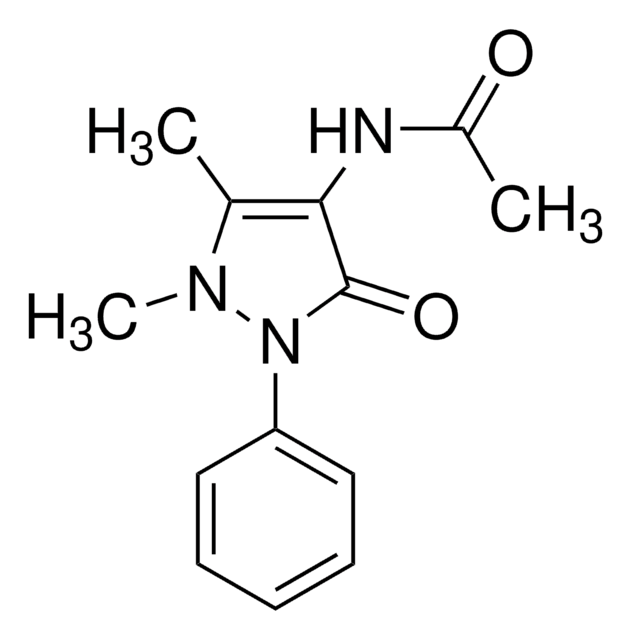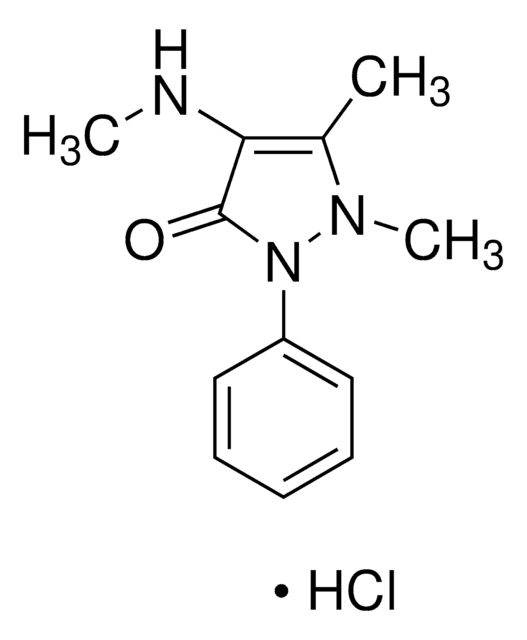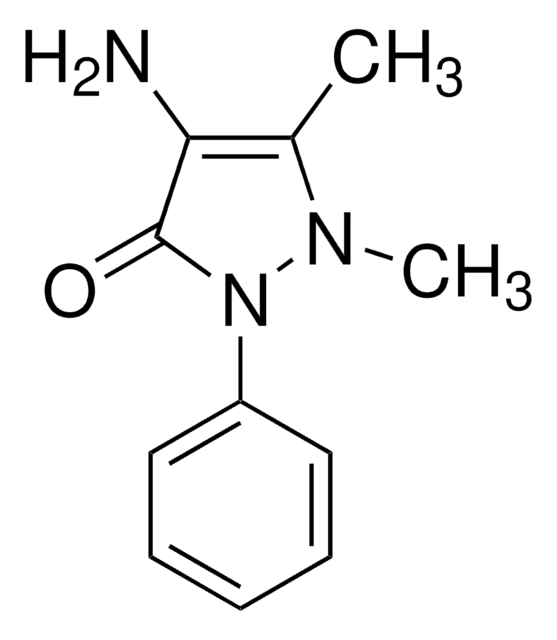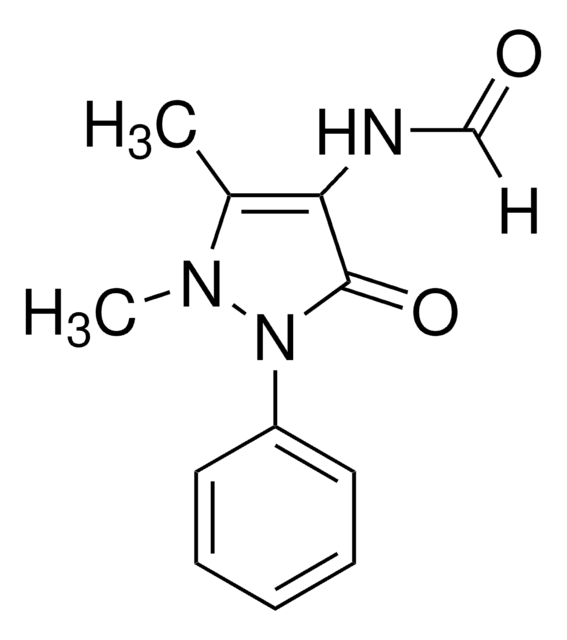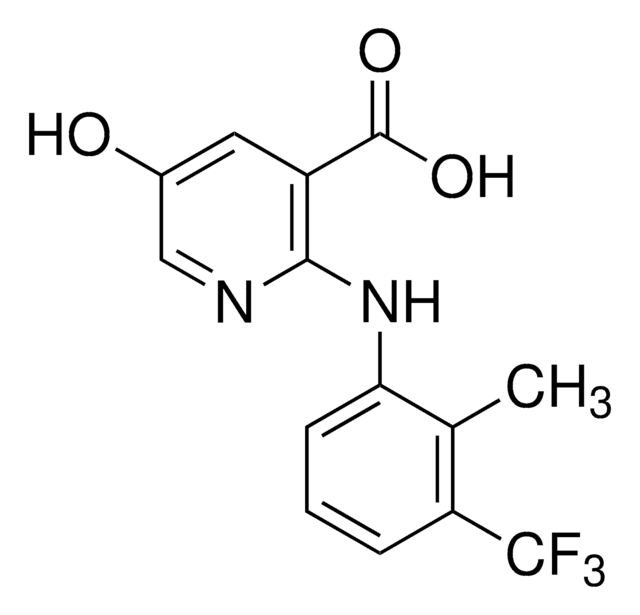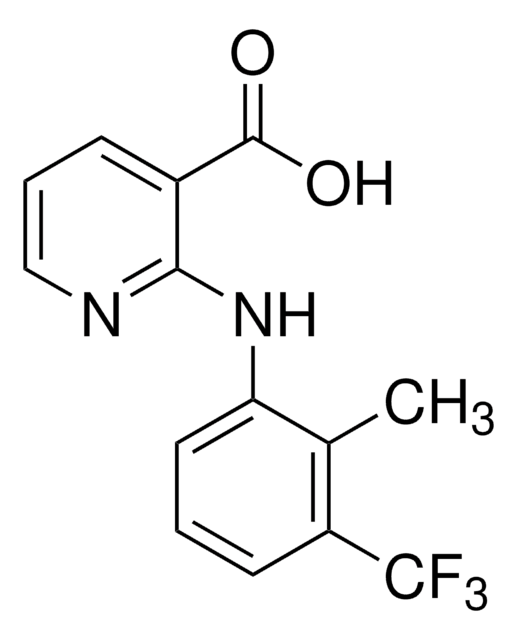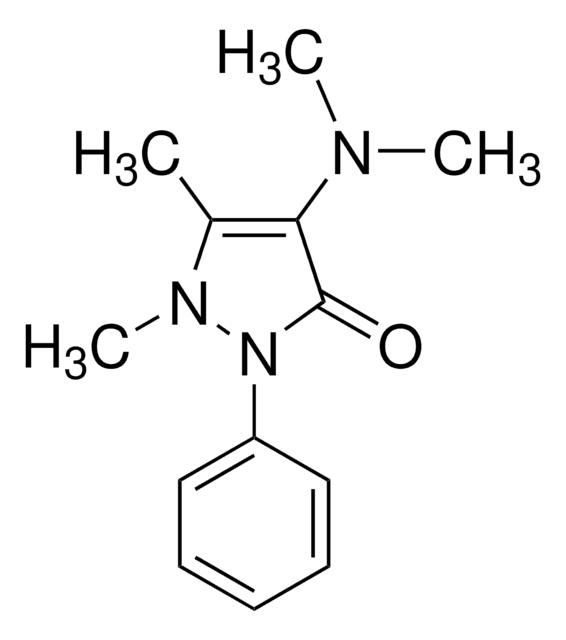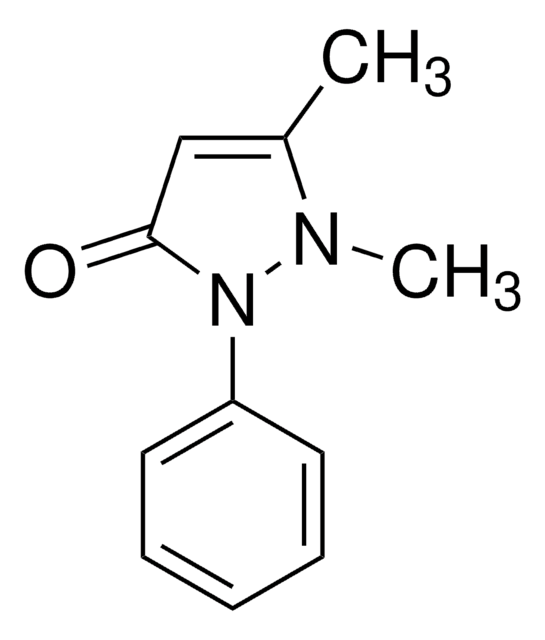32595
4-Formylaminoantipyrine
VETRANAL®, analytical standard
Synonyme(s) :
N-(1,5-Dimethyl-3-oxo-2-phenyl-2,3-dihydro-1H-pyrazol-4-yl)formamide
About This Item
Produits recommandés
Qualité
analytical standard
Niveau de qualité
Gamme de produits
VETRANAL®
Durée de conservation
limited shelf life, expiry date on the label
Technique(s)
HPLC: suitable
gas chromatography (GC): suitable
Application(s)
pharmaceutical
Format
neat
Chaîne SMILES
CN1N(C(=O)C(NC=O)=C1C)c2ccccc2
InChI
1S/C12H13N3O2/c1-9-11(13-8-16)12(17)15(14(9)2)10-6-4-3-5-7-10/h3-8H,1-2H3,(H,13,16)
Clé InChI
WSJBSKRPKADYRQ-UHFFFAOYSA-N
Vous recherchez des produits similaires ? Visite Guide de comparaison des produits
Catégories apparentées
Description générale
Application
- Aqueous samples by ultra-high performance liquid chromatography-high resolution mass spectrometry (UHPLC-HRMS).
- Groundwater, surface water and wastewater samples by online mixed-bed multilayer solid-phase extraction (SPE) and HPLC combined with tandem mass spectrometry (MS/MS).
Informations légales
Vous ne trouvez pas le bon produit ?
Essayez notre Outil de sélection de produits.
Mention d'avertissement
Warning
Mentions de danger
Conseils de prudence
Classification des risques
Acute Tox. 4 Oral
Code de la classe de stockage
11 - Combustible Solids
Classe de danger pour l'eau (WGK)
WGK 3
Faites votre choix parmi les versions les plus récentes :
Certificats d'analyse (COA)
Vous ne trouvez pas la bonne version ?
Si vous avez besoin d'une version particulière, vous pouvez rechercher un certificat spécifique par le numéro de lot.
Déjà en possession de ce produit ?
Retrouvez la documentation relative aux produits que vous avez récemment achetés dans la Bibliothèque de documents.
Les clients ont également consulté
Notre équipe de scientifiques dispose d'une expérience dans tous les secteurs de la recherche, notamment en sciences de la vie, science des matériaux, synthèse chimique, chromatographie, analyse et dans de nombreux autres domaines..
Contacter notre Service technique